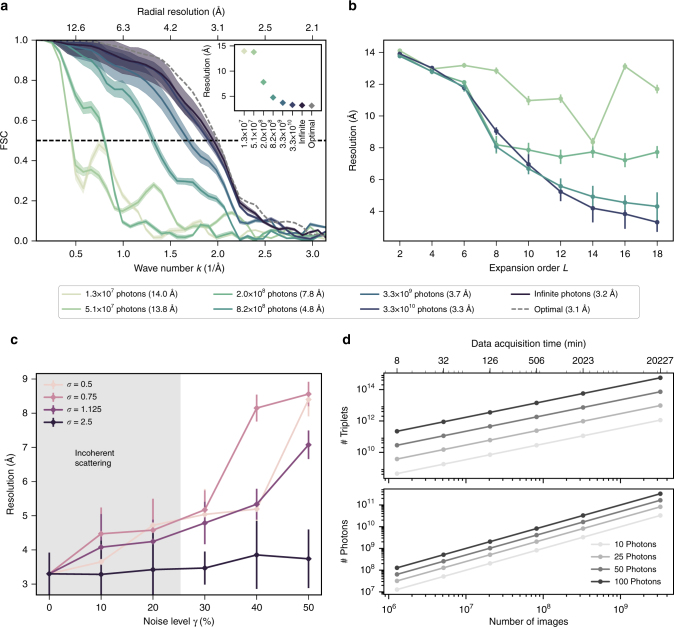Fig. 3.
Resolution as a function of collected photons and noise. a Average Fourier shell correlations (FSC) between the reference electron density of Crambin and the densities retrieved from 1.3 × 107 to 3.3 × 1010 photons (4.7 × 108 to 1.2 × 1012 triplets) and infinite photon number. As a reference, the optimal FSC is shown (dashed gray), which was calculated directly from the known intensity using the same expansion parameters. The inset shows the corresponding resolutions estimated from FSC(kres) = 0.5. The opaque error band was calculated from the standard deviation of the 20 individual FSCs before averaging. b Achieved average resolution as a function of the expansion order L using 5.1 × 107, 2.0 × 108, 8.2 × 108, and 3.3 × 1010 photons (1.8 × 109, 7.1 × 109, 2.8 × 1010, and 1.2 × 1012 triplets, respectively). The error bars show the standard error of mean of 20 independent runs. c Achieved average resolution for synthetic experiments with 3.3 × 109 images including an additional fraction γ of random photons (γ = 0–50%) following a Gaussian distribution with varying width σ. For noise from incoherent scattering (indicated as gray background), we assumed a width σ = 2.5 Å−1, but also included narrower widths σ = [0.5, 0.75, 1.125] Å−1 as a model for other sources of noise. The error bars show the standard error of mean of 20 independent runs. d Expected number of photons and triplets as a function of image numbers for 10, 20, 50, and 100 photons per image. Also shown (top axis) is the estimated data acquisition time given a 27 kHz XFEL repetition rate and 10% hit rate

